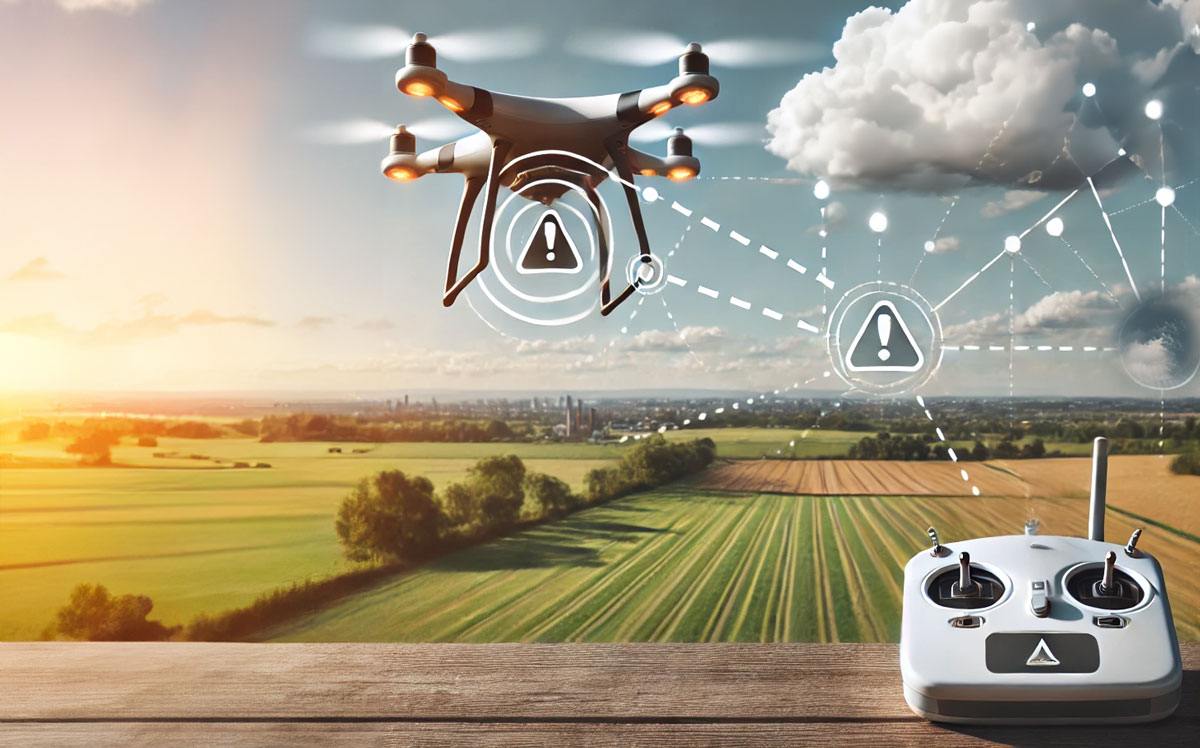Introduction to Abnormal & Emergency Situations
During sUAS operations, the remote PIC should be prepared to respond to abnormal and emergency situations.
Always refer to Manufacturer’s Instructions
For guidance on the appropriate procedures in these situations, refer to the manufacturer’s instructions.
Abnormal Situations vs. Emergency Situations
Unmanned Aircraft Systems (UAS) operations can encounter unexpected challenges that require quick decision-making and adherence to safety protocols. These situations fall into two categories: abnormal situations, which involve deviations from normal flight operations but are manageable with pre-planned responses, and emergency situations, which demand immediate action to prevent harm.
Abnormal Situations:
- Lost Link (signal loss situation)
- Alternate landing/recovery sites
- Loss of GPS
- Loss of video link
- Avoidance of proximate manned or unmanned aircraft
- Flight termination (controlled flight to ground).
Emergency Situations:
- Flyaways
- Avoidance of manned or unmanned aircraft in imminent danger of colliding with the sUAS
- Battery fires.
Procedures for Emergencies in the Field
Lesson Section Tagline intro if Applicable. Remove if nothing there.
1. Lost Link Procedure
Lost Link refers to a situation where a small unmanned aircraft system (sUAS) loses its communication connection with the remote pilot or control system. This disconnection can occur due to signal interference, hardware issues, or other factors.
Lost Link Procedures:
- When a lost link occurs, the sUAS is programmed to follow predefined procedures to ensure safety and minimize risk. These procedures include:
- Hovering or Flying in a Set Pattern: The drone will remain airborne in a predictable pattern while attempting to reconnect with the remote pilot.
- Automatic Actions: If the link isn’t restored within a predetermined time or if the battery is running low, the drone will automatically land or return to its starting point.

2. Flight Termination Procedure
Definition:
Flight termination involves intentionally and deliberately bringing your sUAS to the ground in a controlled manner. This action might be part of your lost link procedures or chosen if continuing the flight poses safety risks or immediate dangers.
If you need to perform flight termination, follow your specific flight termination points or backup plans. These plans should:
- Prepare for situations where the system cannot be recovered.
- Account for altitude, winds, and other environmental conditions.
- Take into account obstacles, people, congested areas, and other aircraft operations.
3. Flyaway Procedure
A flyaway occurs when the sUAS does not respond to control inputs and fails to execute known lost link maneuvers. This results in unpredictable and uncontrolled flight behavior.
Causes
- A flyaway often starts with the loss of communication between the remote pilot and the sUAS, leading to erratic flight.
- If the sUAS’s lost link procedures are not set up or followed, it can lead to a flyaway situation.
- Commonly, interference with communication frequencies causes flyaways.
In the event of a flyaway, the remote Pilot-in-Command (PIC) should:
- Immediately inform all crewmembers and bystanders.
- If operating in controlled airspace, notify ATC.
4. Loss of GPS Procedure
GPS is essential for precise navigation and situational awareness in sUAS operations. When the GPS signal is lost, it can disrupt your flight control and navigation systems.
Immediate Actions:
- If the GPS signal is lost, continue operating the sUAS as usual. Be aware that the loss of GPS may lead to changes in flight modes or controls.
- Be prepared to manually control the sUAS if needed, rather than relying solely on automation.
5. Battery Fires
Battery fires are a serious safety concern for sUAS operations due to their reliance on high-energy rechargeable batteries. These batteries, typically lithium metal or lithium-ion, undergo temperature changes during charging and discharging, which can strain their internal components and increase the risk of fire.
Both types of batteries are highly flammable and can self-ignite due to short circuits, overcharging, exposure to extreme temperatures, mishandling, or defects.
- Thermal Runaway is a dangerous condition where a battery overheats and continues to get hotter, potentially leading to a fire or explosion. To prevent this, avoid overcharging the battery, ensure proper ventilation, and monitor battery temperatures during operation.
To prevent battery-related incidents, follow these practices:
- Before Each Flight:
- Inspect Batteries: Check for visible damage, swelling, deformation, or unusual heat. These signs indicate potential risks and require immediate attention.
- During Battery Storage and Handling:
- Proper Storage: Store batteries in a cool, dry place away from extreme temperatures. This reduces stress on the battery and lowers the risk of thermal runaway.
- Prevent Short Circuits: Use the original packaging, separate plastic bags, or insulating terminals to prevent short circuits. Keep spare batteries away from metal objects like coins, keys, or jewelry to avoid accidental shorts.
- Avoid Physical Damage: Never crush, puncture, or apply pressure to the batteries during storage or transport. This can compromise their integrity and increase the risk of fires.



